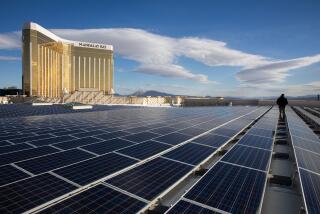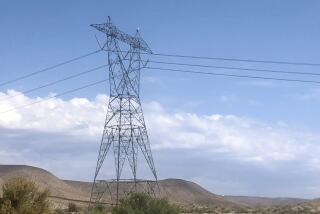CSUN Students Working on Car for a Sunny Day
- Share via
For a solar-powered race car, a cloudy day is bad news.
So, too, are unexpectedly steep hills, sudden thunderstorms or the stifling thickness of humid air.
In a dusty engineering workshop at Cal State Northridge, Eric Klinker taps a few computer keys and back come the solutions: Quit early on the overcast day. Reduce speed on the hills. Speed up downhill. Stop if a storm gets under way.
Those maneuvers will be more than a computer program in July, when 36 CSUN engineering students compete in the first Sunrayce USA, a 10-day Florida-to-Michigan road race against 31 other colleges.
The 1,800-mile race is being sponsored by General Motors, which won the 1987 World Solar Challenge in Australia with its sleek car, known as Sunraycer. Starting with $5,000 seed money from GM and $2,000 from the U.S. Department of Energy, students at each of the competing colleges must raise money to design and build their solar vehicles and transport them to the competition.
The CSUN seniors are calling their invention Blazer. Manuel Sanchez, solar race project director and a mechanical engineering major, gave a tour of the operation:
See that stained plastic shell over there? It’s a fiberglass mold of the Blazer’s chassis, ready to shape layers of graphite into a narrow, airplane-like shape. See those stacks of metal plates? Those are solar panels, covered with tiny cells and tinsel-like conductive wires that will transfer the sun’s power to the car’s seven batteries.
The solar technology used for Blazer is not revolutionary. The big challenge is in designing a vehicle that is more aerodynamic and mechanically efficient than that of competing colleges, Sanchez said, demonstrating its advantages with a wooden model of the vehicle.
Sanchez is freshly showered and well-groomed for the occasion, but many of his colleagues are wan, soiled and pasty--testament to the endless hours they spend working on the vehicle, which doubles as their senior project.
“It’s a LOT of time,” Sanchez said. “Sometimes we’re here 80 hours a week.”
Sanchez is yelling over the din of his fellow students, who are yelling over the din of the second test of the Blazer motor.
Already lagging a month and several thousand dollars behind schedule, the students anticipate many more long days and nights.
Their prize for such devotion? A remote chance of landing a career in an area that uses solar technology, a trip to the Midwest for about 12 of the students who stay with the project for the duration and, for one lucky student short and skinny enough to slip into the Blazer’s cockpit, the opportunity to drive the car during eight-hour race days.
The Blazer will weigh 650 pounds, less than a third of the weight of the average gasoline-powered car, said student Tim Foster.
Two hours before and two hours after every race day, its cells must be tilted to absorb the sun’s rays. During the race, a computer the size of a sandwich will send signals back to a chase vehicle, where a larger computer will keep track of battery levels.
Although it could speed up to 90 m.p.h., battery and weight restrictions set by GM--not to mention speed limits on the Midwestern roads--will reduce maximum racing speed to about 50 m.p.h., Foster said.
So far, about two-thirds of the $75,000 needed to build the car has been raised from sources ranging from Lockheed to the CSUN Associated Student Union, Sanchez said. Rejection letters are proudly posted on the engineering workshop wall, including one from New York billionaire Donald Trump.
Also posted is an article about the University of Michigan, which joins such prestigious institutions as Stanford University and Massachusetts Institute of Technology as competitors in the race. Michigan is spending $580,000 on its solar car, which elicits groans from the CSUN students.
“They even say they are paying for material, research and consultants ,” said Youssef Ismail, a stress analysis major. “They’re saying right there that they’re not building it themselves.”






